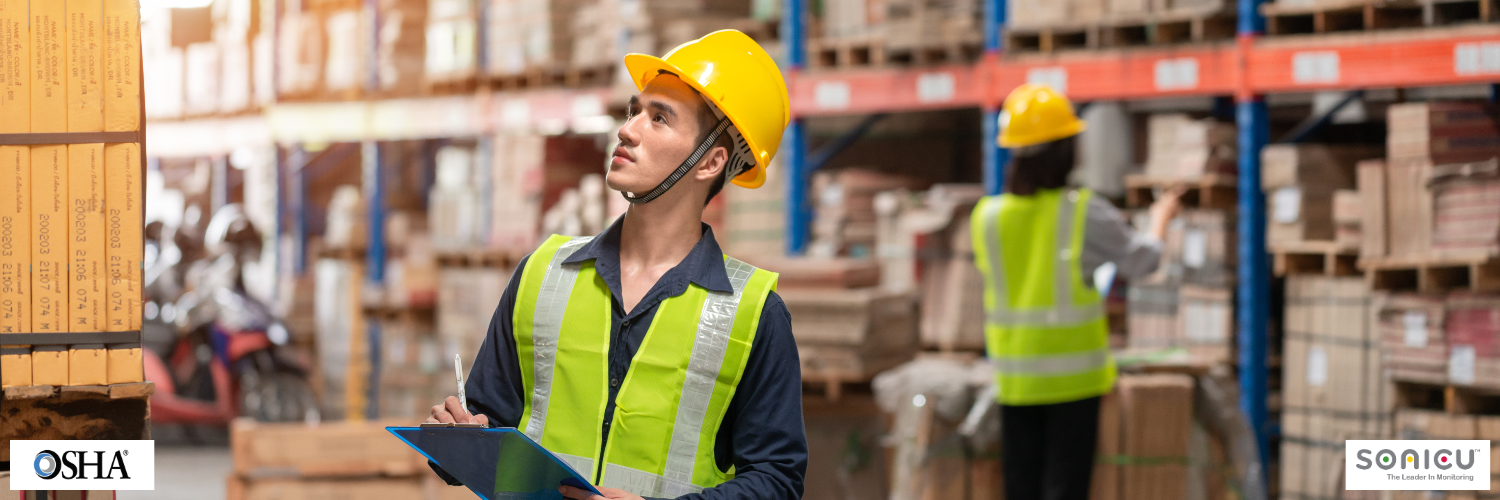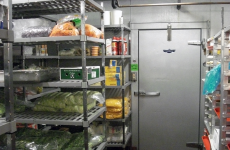
Identifying Open Door Threats in the OR to Reduce Surgical Site Infections
Operating rooms may be among the most tightly regulated environments in healthcare facilities, Sonicy helps ensure they're safe and monitored correctly.
Designed with safety, efficiency and compliance always top of mind, we’ve evolved over a decade with continuous improvements from customer feedback. Serving the healthcare, research and food service industries.
Sonicu offers a comprehensive suite of monitoring solutions
that help organizations safeguard assets, automate compliance and reduce manual processes.
Sonicu offers a comprehensive suite of monitoring solutions
that help organizations safeguard assets, automate compliance and reduce manual processes.
From protecting vaccines and research materials to safeguarding food service and facility operations, Sonicu’s monitoring applications cover temperature, humidity, pressure, and more. Whether you’re in healthcare, life sciences, food safety, or other industries, Sonicu provides visibility, compliance, and peace of mind across all your critical applications.

Understanding Heat Stress and OSHA Regulations: How to Protect Your Employees and Ensure Compliance

Careful management and improved logistics across the cold chain could save billions of dollars in wasted food.
It's a staggering statistic, and one you've likely heard some variation of—one-third of the world’s food produced for human consumption goes to waste. Estimates put annual food wastage at 1.3 billion tons, an amount worth billions of dollars.
What's more, it's worth billions of lives.
Considering that over 2 billion people are affected by food insecurity, and waste numbers are only rising, a lot needs to be done to alleviate hunger while minimizing the losses attributed to food wastage.
Emerging technologies like temperature monitoring can play a significant role in helping mitigate food waste while also improving the profitability of food distributors and retailers.
Tracing the Food Wastage: From Farm to Fork
Food wastage happens along the entire supply chain (processing, distribution, consumption), but it begins right from production.
If farmers don’t have access to market data and communication links with other farmers or buyers, much of what they produce doesn’t make it to people’s plates due to oversupply.
Typically, food supply chains are characterized by complexity. Researchers estimate that 14 percent of food waste occurs in the interim between when the food is produced and when it is distributed.
As a consequence, fresh food in up to 70 percent of global supply chains goes bad due to issues such as inadequate or improper storage.
Over time, however, continued innovation, including technologies like coldvision.ai temperature monitoring, could minimize these losses to a great extent.
Take cold chains, for instance. A variation on conventional supply chains, they entail the movement of perishable goods under refrigeration at each stage.
The challenge arises from the complexity that comes with handling different types of foods, which require varying temperature conditions to be distributed in different areas. Despite this challenge, simple cold chains have the potential to cut food wastage by close to half a billion tons every year.
This represents a significant improvement in our ability to feed more people at a lower cost while driving greater profitability into the food service company’s bottom line.
And yet this isn’t enough.
More can be done to preserve food products in a way that keeps their quality and nutritional value intact from farm to fork, increasing access to healthy food for all.
For starters, here’s how improved cold chain management can cut food wastage and enhance food security.

Refining Distribution: Micro Fulfillment Closer to Consumers
Typically, food distribution depends greatly on a network of distribution centers, docks, and trucks to facilitate the transportation of food items from place to place until they finally arrive at grocery outlets or are delivered to consumers.
Several challenges present themselves in this method.
Different foods require varying ideal conditions. With the large-scale refrigeration centers being generalized, it's inevitable that some of the food goes bad while in transit.
Further complicating the issue is the distance between these centers and the final destination.
Food retailers in one part of the country may depend on supply from such centers in other states, for instance. As such, both time and distance affect the delivery of entirely unspoiled food from reaching consumers.
Rethinking distribution calls for a shift from centralized food distribution. There is a need to shorten the chain and, in doing so, bring food much closer to market.
As an alternative, micro fulfillment centers could be a viable alternative. These are less expensive cold storage facilities that can be located much closer to retail points.
Taking up 10,000 square feet or less, micro fulfillment centers not only reduce the miles food travels in transit, but they could also prove less expensive to establish and maintain while reducing the costs associated with making food accessible.
Retailers can manage their food inventory more efficiently when they don’t have to source large quantities only for the actual supply to fall below expectations.
Regional micro fulfillment centers are better placed to meet shifting demand as they hold smaller quantities and are much closer to points of sale and consumption.
This makes it easier for retailers to order food items based on demand projections, and can especially be useful when there’s a need for additional food supply on short notice.
Dedicated Transportation: Another layer of protection
To address the issue of food getting spoiled while in transit, we should rethink how it finds its way to the consumer.
While traditional transport methods may have cooling mechanisms in place, innovations such as transportation equipped with monitoring systems can go a long way in keeping food fresh for longer and reducing wastage to a minimum.
Sonicu’s temperature monitoring solution offers constant and consistent temperature monitoring for distribution centers.
When coupled with temperature monitoring included in transportation systems, cold chain leaders can protect their products with a round-the-clock assessment of conditions while goods are in transit and in storage, assuring food retailers that food items will be delivered in good condition.

Harnessing the Internet of Things
In addition to leveraging better distribution and climate monitoring technology, there’s room to harness the possibilities arising from advances in machine learning and artificial intelligence (AI) to improve the delivery of fresh food to consumers.
Increasingly sophisticated technology tools can better process hefty amounts of data in less time and generate insights that can help improve every stage of the food distribution process.
Using data analysis, data points can be mapped out and inferences made to predict consumer demand more accurately, project production shortfalls due to weather patterns, estimate ideal transport routes/timelines, and gauge the probability of food getting spoiled based on a set of customizable criteria.
Sonicu’s wireless remote monitoring systems leverage the Internet of Things (IoT) and cloud-based technology to provide reliable data on product safety 24/7. Products can be monitored remotely, and alerts are triggered automatically if a temperature excursion occurs.
Based on the product, it’s possible to not only monitor temperature conditions, but also humidity, pressure, and even Ultra Low Temperature (ULT) conditions, which were critical when COVID-19 was being distributed.
As a result, it’s now possible to monitor trailers throughout the transport process from distribution centers to other points along the supply chain.
Food items not only ship in ideal conditions, but real-time data on their condition is available.
The best part is that the Sonicu monitoring process is entirely automated.
Additionally, Sonicu offers advanced cold storage solutions suitable for virtually any temperature-sensitive environment.
For those operating cold storage facilities such as large-scale warehouses or micro-fulfillment distribution centers for food, critical variables can easily be monitored from anywhere through the web-based dashboard, which is accessible on mobile devices, tablets, and desktops.
These real-time, continuous monitoring solutions enable faster response times to address potential issues in storing or delivering food to the point of sale while improving efficiency and reducing workload from manual processes.
As with any system relying heavily on the internet to remain operational, security is of great concern.
All Sonicu monitoring solutions use the SoniCloud Monitoring system, which has key security features in place, including:
Once goods arrive at retail points, Sonicu offers the same monitoring solutions for retail centers to minimize spoilage by maintaining ideal conditions.
As automation becomes the norm and technology continues to improve, adopting innovative processes and tools is one way of reducing food waste and associated financial losses while contributing to better nutrition outcomes for all.
To learn more about how Sonicu can help with your monitoring needs in the Food Safety, Healthcare, Pharmaceuticals, Life Sciences, and Animal Health industries, get in touch.
Subscribe to our newsletter for expert insights, product updates, and strategies to keep your operations running smoothly.

